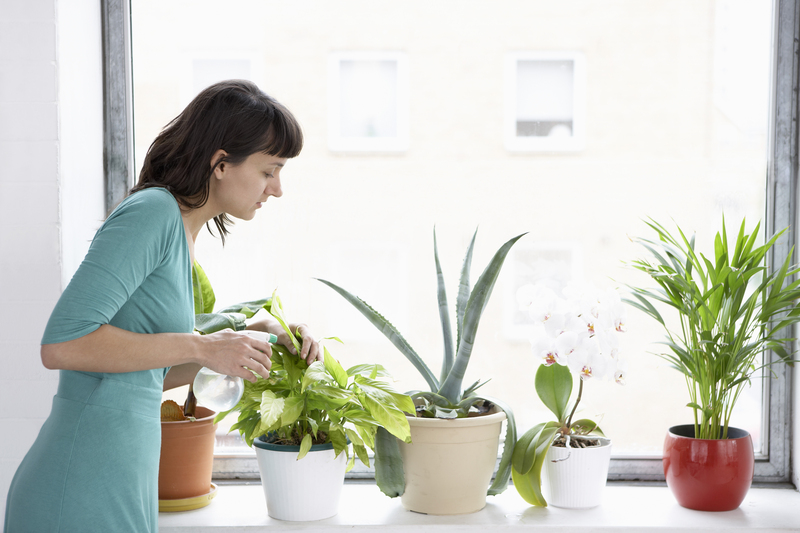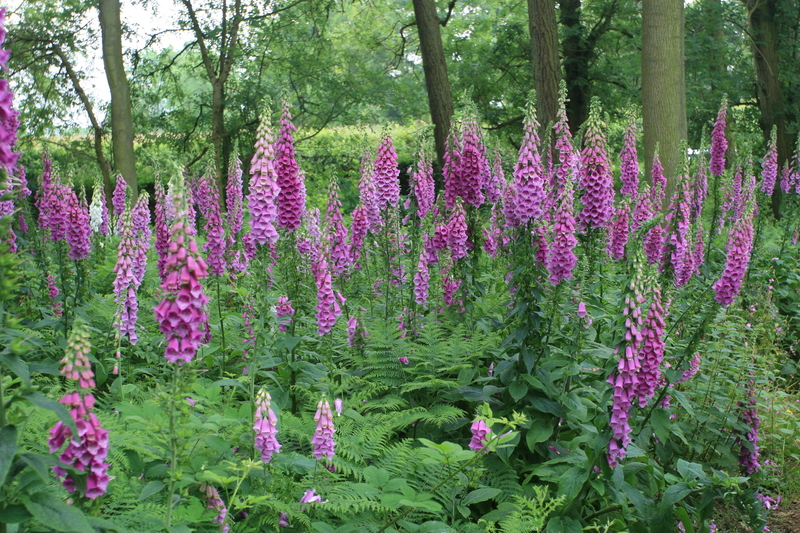How to Cultivate Stunning Orchids
Posted on 20/05/2025
If you've ever marveled at the exquisite beauty of orchids and wondered about how to cultivate stunning orchids, you're not alone. These breathtaking blooms can transform any environment, but many enthusiasts find growing orchids daunting. In reality, with the right approach, you too can enjoy thriving, show-stopping orchids at home or in your garden. This comprehensive guide will teach you everything you need to know to successfully cultivate orchids, cover care tips, common mistakes, and advice for beginners and seasoned growers alike.
Understanding Orchids: Types and Characteristics
The Allure of Orchids
Orchids represent one of the largest families of flowering plants, with over 25,000 naturally occurring species and more than 100,000 hybrids. Their graceful forms, vivid colors, and intricate patterns captivate collectors and gardeners worldwide. From the classic Phalaenopsis to exotic Cattleya and rare Paphiopedilum, orchids provide a dramatic flair to any collection.
Popular Orchid Varieties for Cultivation
- Phalaenopsis (Moth Orchid): Known for ease of care and long-lasting flowers, ideal for beginners.
- Cattleya: Prized for their vibrant colors and large blossoms, a common choice among collectors.
- Dendrobium: Robust growers with delicate clusters of blooms.
- Oncidium (Dancing Lady): Popular for their profuse, delicate blooms.
- Paphiopedilum (Lady's Slipper): Unique pouch-shaped flowers and attractive foliage.
Knowing the type of orchid you're growing is the first step to mastering their cultivation, as care requirements can differ significantly depending on the species or hybrid.

Choosing the Best Orchid for Your Space
Assess Your Environment
Before you start your orchid cultivation adventure, consider where you plan to grow orchids. Orchids thrive in environments that mirror their native habitats:
- Tropical Orchids: Need warmth, humidity, and filtered sunlight (e.g., Phalaenopsis, Dendrobium).
- Cool-Growing Orchids: Prefer cooler temperatures and less humidity (e.g., Cymbidium, Odontoglossum).
- Intermediate Orchids: Most hybrids fall into this category and adapt well to household conditions.
Analyzing factors such as light availability, temperature, and humidity will help you pick the right orchid for your conditions and increase your chances of cultivating stunning orchids.
Orchid Cultivation: Step-by-Step Guide
1. Selecting the Right Pot and Medium
Unlike standard houseplants, most orchids are epiphytes--meaning they grow on trees rather than in soil. Using the proper potting medium is crucial. Popular options include:
- Bark chips: Allow for free airflow and drainage, perfect for Phalaenopsis and Cattleyas.
- Sphagnum moss: Retains more moisture, recommended for orchids needing constant dampness.
- Coconut husk, perlite, charcoal: Often added for extra aeration and drainage.
Always ensure your orchid pot provides excellent drainage--avoid letting roots sit in water, as this leads to rot.
2. Perfect Lighting Conditions
Light is key to producing vibrant blooms when cultivating orchids. Most orchids need bright, indirect light. Here are some pointers:
- Place orchids near an east or south-facing window (behind a sheer curtain is ideal).
- Use grow lights if natural light is limited; LEDs are energy-efficient and effective.
- Leaves should be medium green--yellowish-green means too much sunlight, very dark green indicates too little.
3. Maintaining the Ideal Temperature
Orchids generally prefer daytime temperatures between 65?F and 80?F (18?C-27?C) and night temperatures that are 10-15?F cooler. Sudden temperature swings or drafts should be avoided. Some species, like Cymbidiums, need cooler winters to initiate flowering.
4. Managing Humidity
Orchids thrive in humid environments. Aim for humidity levels between 40% and 70%. If your home is dry, especially in winter, consider:
- Placing orchid pots on a humidity tray (a shallow tray filled with pebbles and water).
- Using a room humidifier.
- Misting leaves regularly with softened or distilled water (avoid tap water with chemicals).
5. Watering Your Orchids Correctly
Overwatering is the number one orchid killer. Roots need to dry out between waterings. The frequency depends on environment and media:
- Bark mixes dry out faster and may need watering once a week.
- Sphagnum moss holds more moisture--water every 10-14 days.
- Check with your finger or a wooden skewer; water only when the medium feels dry.
*Tip: Always water orchids in the morning to allow the foliage to dry before nightfall, reducing the risk of disease.*
6. Fertilizing for Fabulous Blooms
Orchids are not heavy feeders but benefit from regular, diluted fertilizing. Use a balanced orchid fertilizer (e.g., 20-20-20) every two weeks during growth. Inactive periods require minimal or no feeding. *Remember: It's better to under-fertilize than over-fertilize--less is more!*
Repotting Orchids: When and How
Knowing When to Repot
Orchids generally need repotting every 1-2 years, ideally after flowering or if you see:
- Roots spilling out of the pot.
- Potting medium breaking down or becoming compacted.
- Reduced blooming due to overcrowded roots.
Repotting Steps
- Gently remove the orchid from its pot, taking care not to damage roots.
- Trim away any dead, mushy, or rotten roots with sterilized scissors.
- Place the plant in a new pot with fresh orchid mix, positioning roots evenly.
- Water sparingly for 1-2 weeks to help adjust to the new medium.
Tip: Orchids often appear stressed after repotting--don't panic! They usually adjust and bounce back after a few weeks.
Common Orchid Growing Mistakes and How to Avoid Them
- Overwatering: Wait for the growing medium to dry out before the next watering session.
- Poor light: Adjust the orchid's placement if it's not flowering or leaves turn too dark or yellow.
- Wrong potting mix: Only use specialized orchid substrates for healthier roots.
- Ignoring pests: Watch for aphids, mealybugs, and spider mites--treat promptly with insecticidal soap.
- Skipping repotting: Old medium breaks down and suffocates roots.
Orchid Propagation: Grow Your Collection
Division
Many orchids, especially sympodial types (Cattleya, Dendrobium), can be divided when mature. Carefully split the plant into sections, each with several pseudobulbs and healthy roots, then pot each separately.
Keiki (Offshoot) Method
Some orchids, like Phalaenopsis and Dendrobium, produce baby plants (keikis) on flower spikes. Once these develop roots, they can be gently detached and potted.
How to Encourage Your Orchid to Rebloom
- Give a temperature drop: Many orchids need cooler nights to trigger blooming.
- Reduce watering slightly: Especially after the blooming period ends.
- Move to a brighter spot: But always avoid direct midday sun.
- Fertilize sparingly: Use a "bloom booster" fertilizer that has higher phosphorus.
Dealing with Orchid Pests and Diseases
Healthy orchids rarely suffer from pests or diseases, but problems sometimes arise:
- Mealybugs and scale: Remove with isopropyl alcohol-soaked swabs or use insecticidal soap.
- Spider mites: Increase humidity, wash leaves, and treat affected areas.
- Root rot: Remove affected roots, switch to fresh medium, and improve drainage.
- Leaf spots (fungal or bacterial): Isolate the plant and remove damaged leaves. Use a fungicidal spray if needed.
Orchid Care Tips for Long-Term Success
- Observe regular routines: Orchids love consistency in watering and feeding schedules.
- Keep air moving: Gentle air circulation prevents fungal and bacterial issues.
- Wipe leaves occasionally: Dust can inhibit photosynthesis, so clean gently with a damp cloth.
- Be patient: Orchids often rest between flowering; don't throw out an otherwise healthy plant if it's not blooming right away.

Frequently Asked Questions About Orchid Cultivation
How Often Should I Water My Orchid?
Most orchids need less water than other houseplants. Generally, water once a week in bark and every 10-14 days in moss. Adjust based on home humidity and temperature.
Why Are My Orchid's Leaves Turning Yellow?
Possible causes include:
- Nutrient deficiency--ensure balanced fertilizing.
- Overwatering causing root rot.
- Natural aging (old, lower leaves turning yellow is normal).
- Too much direct sunlight burning the leaves.
How Can I Make My Orchid Bloom Again?
Provide a period of cooler night temperatures, keep light steady and strong, reduce watering slightly after blooms drop, and use a high-phosphorus fertilizer. Sometimes patience is all that's needed!
Final Thoughts: How to Cultivate Stunning Orchids at Home
Mastering the art of orchid cultivation is a rewarding journey. Start by selecting the right orchid species for your environment, maintain the basics of light, temperature, and humidity, and pay careful attention to watering. Repot your orchids as needed, fertilize them regularly but sparingly, and always watch for pests or disease. With patience, observation, and dedication, you'll be rewarded with stunning orchids that bloom beautifully year after year. Let your love for these captivating plants blossom, and you'll soon find your indoor garden filled with living works of art.
Ready to get started? Pick up your favorite orchid today and apply these proven methods for how to cultivate stunning orchids. Happy growing!

